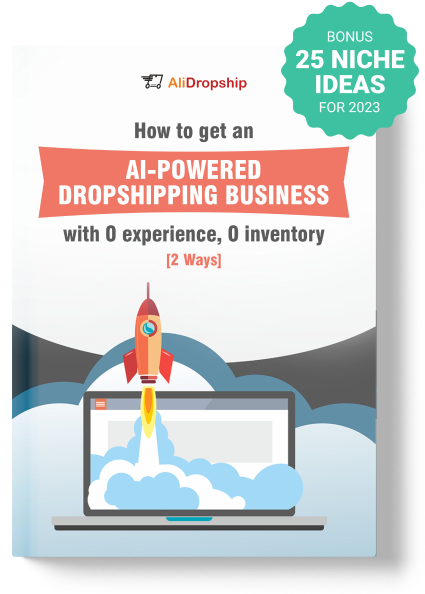How To Start Dropshipping In The Netherlands In 2025
Why start dropshipping


How dropshipping works
Why start dropshipping in Netherlands
Starting a dropshipping business in the Netherlands presents a unique opportunity for entrepreneurs looking to tap into a growing ecommerce market. With approximately 97% of households having internet access, the Dutch population is highly connected, facilitating seamless online transactions.
The Netherlands also boasts a robust logistics infrastructure, positioning it as a key hub for international trade. This strategic advantage allows dropshippers to efficiently serve customers both locally and across Europe, enhancing their competitive edge.

The Dutch market is characterized by a high purchasing power, which translates into increased consumer spending online. In 2023, the ecommerce sector in the Netherlands was valued at over €30 billion, with projections estimating it will reach approximately €33.43 billion in 2024 and grow to around €52.16 billion by 2029.
This upward trend indicates a favorable environment for dropshipping, where businesses can thrive without the burden of maintaining inventory. Instead, entrepreneurs can focus on marketing and customer engagement, driving sales while relying on suppliers to handle fulfillment.
However, potential dropshippers should remain aware of the challenges that come with this business model. Issues such as shipping delays and product quality control can impact customer satisfaction. Building strong relationships with reliable suppliers is crucial to mitigate these risks. By leveraging the Netherlands’ advantageous market conditions and addressing these challenges proactively, aspiring dropshippers can carve out a successful niche in the ecommerce landscape.
All in all, the combination of a connected population, strong purchasing power, and a favorable market outlook makes the Netherlands an attractive destination for dropshipping ventures. Entrepreneurs willing to navigate the complexities of this model can capitalize on the growth potential within the thriving Dutch ecommerce sector.
A multicultural environment lets you learn more about the life and issues of various ethnic and social groups, and tailor your offers to various customer segments.

So, there is nothing that would stop you from launching a money-making business that breaks geographic boundaries and lets you run your venture on a global scale. How would you like the idea of selling China-made products to customers widely spread across the world – and staying in the comfort of your own home?


Advantages and disadvantages of dropshipping in Netherlands
Advantages of dropshipping in the Netherlands
1. Low startup costs
One of the primary benefits of dropshipping is the minimal initial investment required. Entrepreneurs can start an online store without the need to purchase inventory upfront, making it accessible for many.
2. No inventory management
Since dropshippers do not hold inventory, they can focus on marketing and customer service rather than managing stock levels, warehousing, and logistics.

3. Wide product selection
Dropshipping allows businesses to offer a diverse range of products without the financial risk of stocking items. This flexibility enables entrepreneurs to test various niches and adapt their offerings based on market demand.
4. Scalability
As the business grows, dropshippers can easily scale operations without the constraints of inventory management. They can expand their product range or target new markets with relative ease.
5. Location independence
Dropshipping can be managed from anywhere with an internet connection. This flexibility allows entrepreneurs to operate their businesses remotely, which is particularly appealing in today’s digital landscape.
6. Access to a growing market
The Netherlands boasts a robust ecommerce market, with increasing internet penetration and purchasing power. This creates a favorable environment for dropshipping businesses to thrive.
7. Strong logistics infrastructure
The Netherlands is known for its excellent logistics and distribution networks, making it easier for dropshippers to fulfill orders quickly and efficiently.
8. Consumer trust
Dutch consumers are generally open to online shopping, which can lead to higher conversion rates for dropshipping businesses that offer quality products and reliable service.

9. Diverse payment options
The Netherlands has a variety of payment methods favored by consumers, such as iDEAL, which can enhance the shopping experience and increase sales.
10. Supportive business environment
The Dutch government offers various resources and support for startups, including funding opportunities and business advice, which can be beneficial for new dropshippers.
Disadvantages of dropshipping in the Netherlands
1. Lower profit margins
While dropshipping reduces upfront costs, it often results in lower profit margins compared to traditional retail models. This can make it challenging to sustain long-term profitability.
2. Limited control over supply chain
Dropshippers rely heavily on suppliers for product quality and delivery times. This lack of control can lead to issues such as stock shortages or shipping delays, negatively impacting customer satisfaction.
3. High competition
The low barrier to entry means that many entrepreneurs are venturing into dropshipping. This saturation can lead to intense competition, making it difficult to differentiate one’s business.

4. Complex return management
Handling returns can be complicated, as dropshippers must coordinate with suppliers while ensuring customer satisfaction. This can lead to logistical challenges and increased operational costs.
5. Quality control issues
Since dropshippers do not handle the products directly, ensuring consistent quality can be difficult. Poor product quality can harm the brand’s reputation and lead to customer complaints.
6. Dependence on suppliers
The success of a dropshipping business is closely tied to the reliability of suppliers. Any disruptions in their operations can directly affect the dropshipper’s ability to fulfill orders.
7. Potential for miscommunication
Working with multiple suppliers can lead to miscommunication regarding product specifications, pricing, and availability, which can create confusion and errors in order fulfillment.
8. Limited branding opportunities
Many dropshipping suppliers offer generic products, making it challenging for businesses to establish a unique brand identity. This can hinder customer loyalty and repeat purchases.
9. Shipping costs and times
Depending on the supplier’s location, shipping costs and delivery times can vary significantly. High shipping fees can deter customers, while long delivery times can lead to dissatisfaction.
10. Regulatory compliance
Dropshippers must navigate various legal requirements, such as VAT regulations and consumer protection laws in the Netherlands, which can be complex and time-consuming.

Although some may doubt the effectiveness of dropshipping, the countless success stories of entrepreneurs who have built thriving businesses from the ground up demonstrate that with the right mindset and strategies, this model is indeed worth pursuing
What to dropship?





How much can you make with dropshipping?
How far you can go with dropshipping: real-life experience


FAQ
What is dropshipping and how does it work in the Netherlands?
How to start dropshipping with AliDropship in the Netherlands?
Is dropshipping legal in the Netherlands?
What are some best dropshipping products to sell in the Netherlands in 2025?
Is dropshipping haram in the context of Islamic principles?
What is branded dropshipping, and can it be achieved through AliDropship?
Is dropshipping worth it?
What is reverse dropshipping?
How to find the best dropshipping suppliers for the Netherlands?
How can I start dropshipping for free in the Netherlands?











